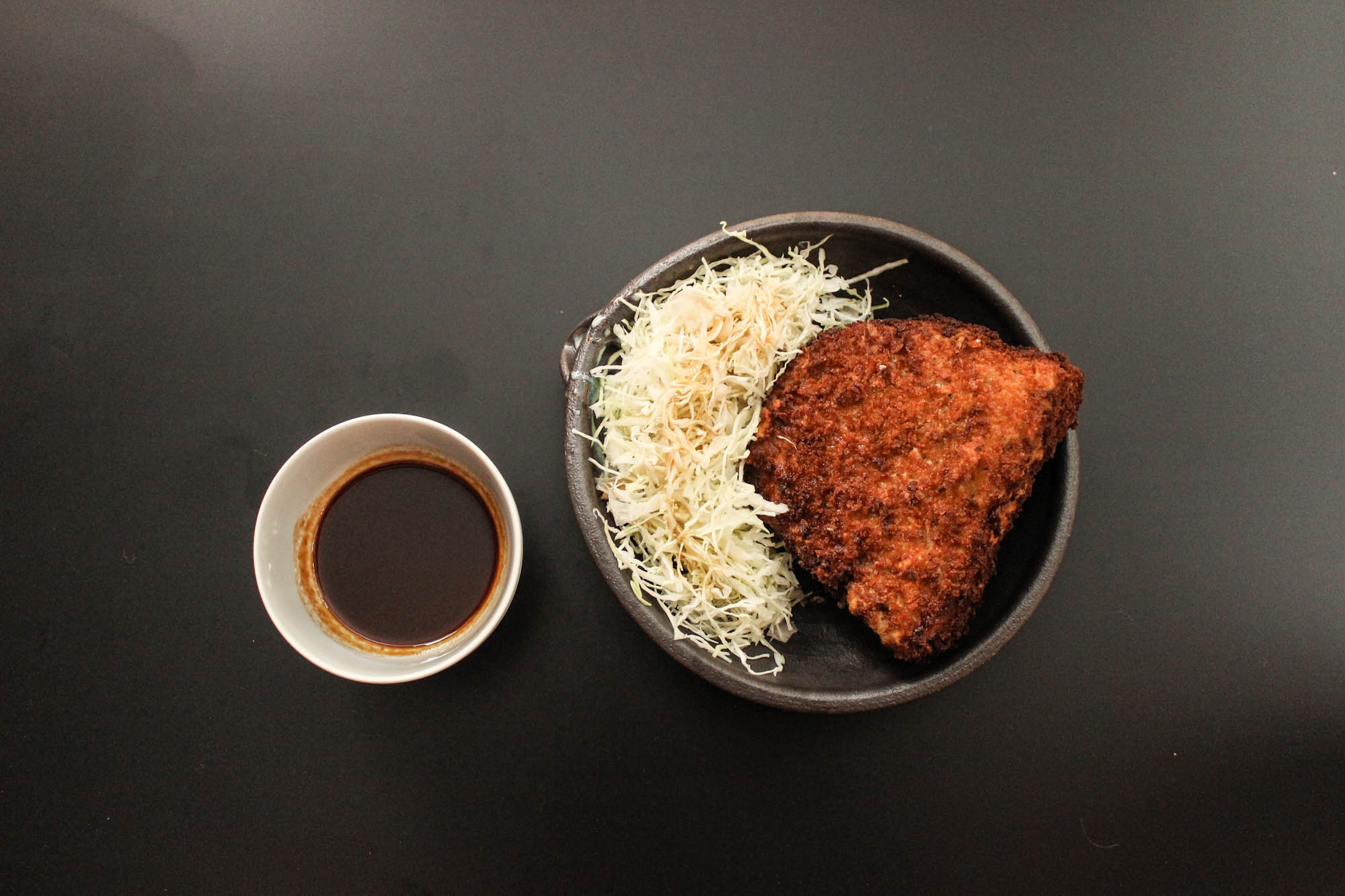

Before we delve into the magically delicious world of fried pork cutlets (or you can skip this diatribe altogether and go straight to our RECIPE page), we need to familiarize ourselves with the pork Americans are used to today.
In 1987, a campaign promoting pork as “The Other White Meat” successfully marketed the protein as a lean, health conscious alternative to chicken and turkey. While pork was celebrated for its high fat content in other parts of the world (think pork belly in Asia), Americans in the past several decades (going back to the 50s and 60s) have considered the lean hog as more desirable. Through generations of genetic breeding to meet consumer demands, we are left with the pork that you find in the supermarket today; an incredibly lean piece of protein that is unforgivingly dry and bland when cooked improperly.
All is not lost. We will make a few adjustments to the traditional way of cooking tonkatsu that should better highlight the flavors of the meat without leaving the texture dry and unpalatable.
First, we are going to choose a large, bone-in pork chop (in our recipe section we use a pork chop from Arcadian Pastures in Sloneville, New York.) in lieu of the traditional boneless pork cutlet. Collagen rich connective tissue helps anchor the muscle of an animal to the bone. When this tissue is heated to the right temperature, the collagen protein dissolves into a succulent gelatin that adds immense flavors to a piece of meat. We also want a larger piece of pork to lower the chances of it being dried out during our deep-frying process.
We deep-fry the pork to get that crunchy, golden brown crust that is bursting with rich flavors, but we need to ensure that our pork chop is cooked thoroughly given its large size. To tackle this issue, we will be pre-cooking the meat using a water bath technique and then finishing it off with the deep-fry. The technique of cooking food in a water bath, better known as “sous vide”, has been gaining popularity in the past few years. By placing our pork in a water bath at a very precise temperature, we can ensure a fully cooked piece of protein without worrying about the loss of moisture from other traditional cooking methods. There are many commercially available immersion circulators on the market catering to the ambitious home cook. But to better serve those who do not have an immersion circulator and vacuum sealer, we will mimic the sous vide method by simply using a large pot of warm water, with a thermometer to closely regulate the temperature.
| Pork Chop Ingredients | Amount | Unit |
|---|---|---|
| Thick Cut Pork Chop | 1 | Unit |
| Unsalted Butter | 4 | Tablespoons |
| Kosher Salt | 1 | Tablespoons |
| Black Pepper | 1 | Tablespoons |
| Ketchup | 2 | Tablespoons |
| Worcestershire Sauce | 2 | Tablespoons |
| Light Soy Sauce | 1 | Tablespoons |
| Mirin | 1 | Tablespoons |
| Sugar | 1 | Tablespoons |
| Flour | 1 | Cup |
| Medium Eggs | 2 | Unit |
| Panko Bread Crumbs | 1 | Cup |
| Toasted Sesame Seeds (Optional) | 1 | Tablespoons |
| Cabbage Salad Ingredients | Amount | Unit |
|---|---|---|
| Cabbage | 1 | Unit |
| Light Soy Sauce | 2 | Tablespoons |
| Sesame Oil | 2 | Tablespoons |
| Rice Wine Vinegar | 2 | Tablespoons |
| Sugar | 1 | Tablespoons |














The Funds. The Managers. And What They're Buying Right Now. A Curated List of the Best of the Best.
What is a Family Office? How do you read a 13Fs? This is where to go when you're ready to GO.
Detailed Analysis on Stategies Deployed By THe World's Greatest Investors.
Hey now